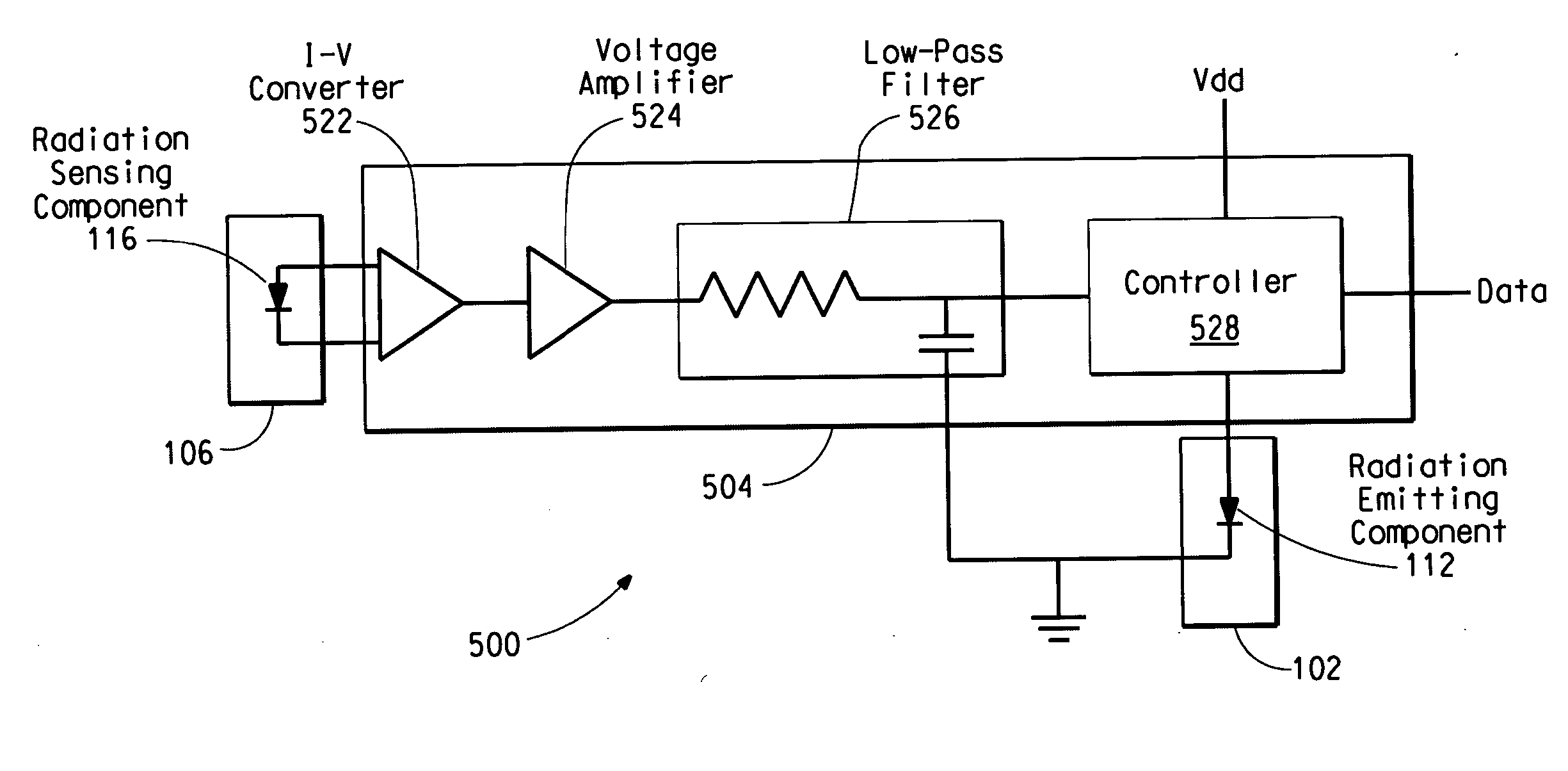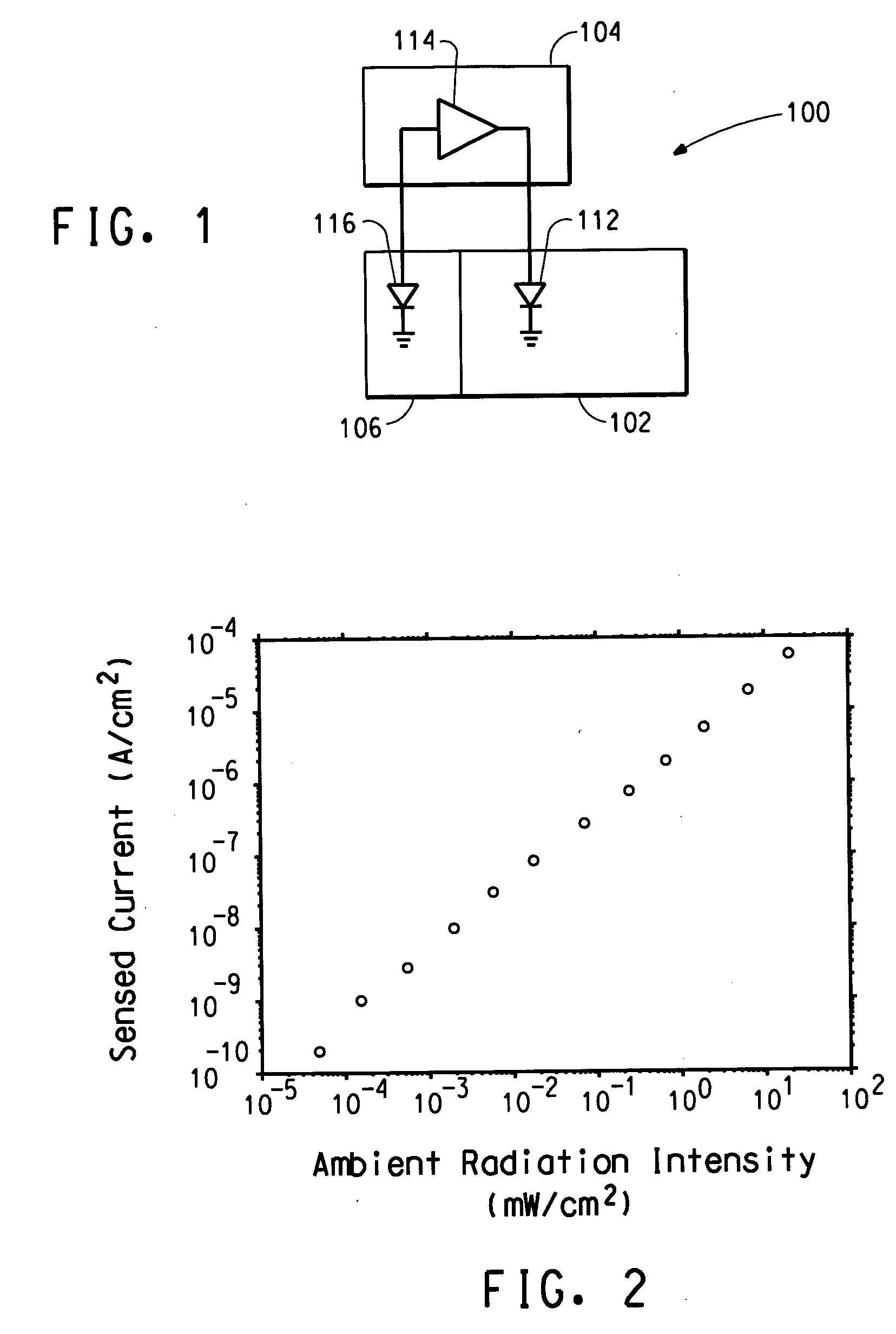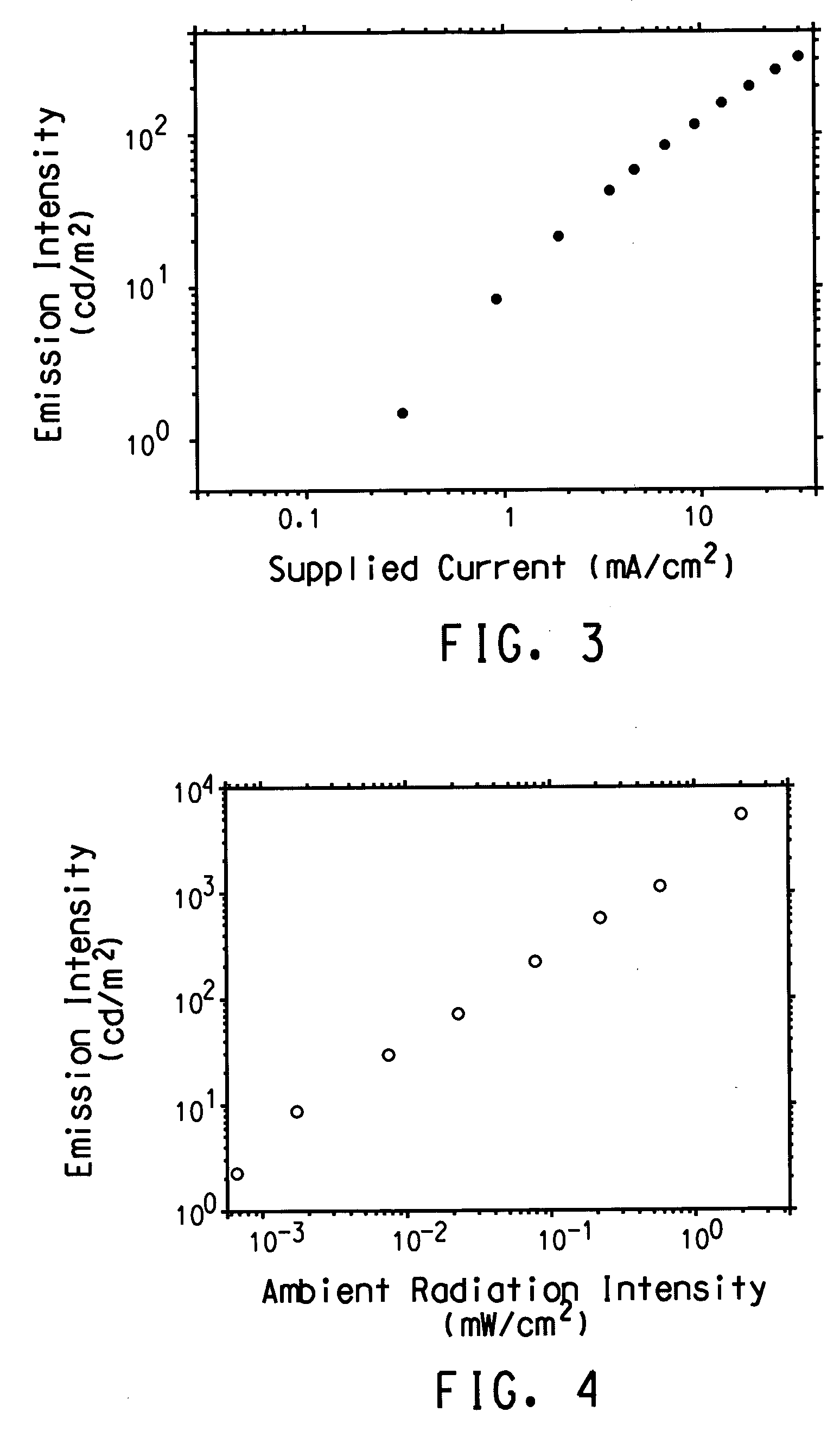Electronic devices including dual-function electronic components, radiation-emitting components, radiation-sensing components, or any combination thereof
a technology of electronic components and electronic components, applied in the field of electronic devices, can solve the problems of display unreadable, display loss of contrast and become unreadable, display reliance on, etc., and achieve the effect of reducing the emission intensity of the display, reducing power consumption, and improving power conservation characteristics
- Summary
- Abstract
- Description
- Claims
- Application Information
AI Technical Summary
Benefits of technology
Problems solved by technology
Method used
Image
Examples
example 1
[0107] Example 1 demonstrates that a dual-function backlight display can be made that includes the arrangement as illustrated in FIG. 5.
[0108] The dual-function backlight display uses two polymer electronic components: one to sense and one to emit light. One area of the display controls the brightness of the entire display. In one specific embodiment, one of the sidebar icons in a cell phone functions as a radiation-sensing component that, at least in part, is used to determine how hard to drive a backlight panel (e.g., a mini-lamp, a set of inorganic LEDs, or a flat-panel backlight that includes one or more OLEDs) for passive displays (such as LCD). The display can also be an emissive display of which the magnitude of the signal (e.g., current) is controlled by the output signal of the control portion 504.
example 2
[0109] Example 2 demonstrates that automatic intensity control can be used with an electronic device.
[0110] Example 2 is similar to Example 1 in that a radiation-sensing component is used with an LED or a minilamp. In one embodiment, a variety of photosensing components can be used for the radiation-sensing component. An example includes an inorganic photodiode, a-Si photovoltaic cell, a CdS photoconductive cell, a small molecule photovoltaic cell, a polymer photovoltaic cell, or the like. An inorganic LED, a small-molecule organic LED, a polymer LED, a commercial minilamp, or any combination thereof can be used as the radiation-emitting component. Automatic intensity control can be achieved with a substantially constant contrast ratio (ambient radiation intensity varying from dark to larger than 200 μW / cm2).
example 3
[0111] Example 3 demonstrates that automatic intensity control can be used with an inverse relationship between ambient radiation conditions and emission intensity.
[0112] Example 3 is similar to Example 2 except that a voltage inverter in inserted into the control portion 504 in FIG. 5. As the ambient radiation intensity decreases, the emission intensity from a backlighting system increases. Such an application can be useful for an LCD or electrochromic display.
PUM
 Login to View More
Login to View More Abstract
Description
Claims
Application Information
 Login to View More
Login to View More - R&D
- Intellectual Property
- Life Sciences
- Materials
- Tech Scout
- Unparalleled Data Quality
- Higher Quality Content
- 60% Fewer Hallucinations
Browse by: Latest US Patents, China's latest patents, Technical Efficacy Thesaurus, Application Domain, Technology Topic, Popular Technical Reports.
© 2025 PatSnap. All rights reserved.Legal|Privacy policy|Modern Slavery Act Transparency Statement|Sitemap|About US| Contact US: help@patsnap.com



